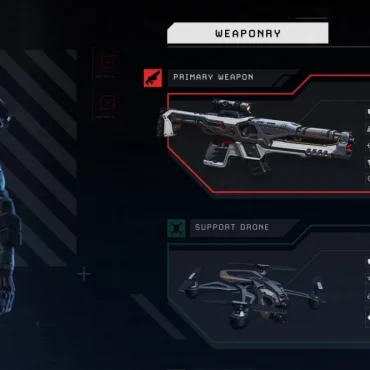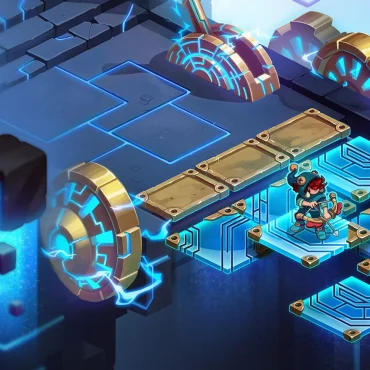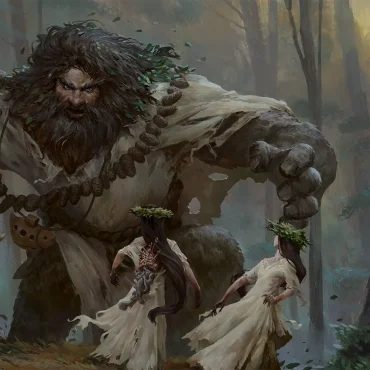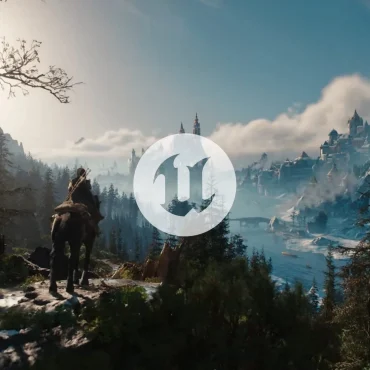Game design mechanics are the backbone of any successful video game. They are the rules and systems that govern gameplay and define the player’s experience. From character movement to combat mechanics, game design mechanics are the foundation upon which a game is built. A game can still succeed without stunning graphics and a unique art style (though that’s still a big plus) but not without engaging gameplay mechanics.
In this article, we wanted to talk about game mechanics and answer some commonly asked questions, sharing our hands-on expertise in Game Design. For this, we interviewed Vladlen Muntian, our Lead Game Designer at N-iX Game & VR Studio. Vladlen will tell you who is responsible for conceptualizing and implementing the game mechanics, what are primary and secondary mechanics and how to make them chime with one another, whether there are any outdated game mechanics, and more.
Choosing and approving game mechanics
Q1: Who and at what stage of the project develops the game mechanics that will be used in the game? Who has the final say in the approval of game mechanics?
Work on game mechanics starts at the pre-production stage. During this time, the general vision of the project and the vision of specific mechanics are formed, with the help of which the idea will then be realized. The conceptualization of the idea is usually carried out by the core team, which may include a game director, department leaders, and producers. The composition may vary depending on the peculiarities of the pipeline in a particular company and the needs of a project.
When the conceptualization is finished and the team already understands what kind of game they will have to make, they start working directly on the mechanics. At this stage, a generalized Game Design Documentation (GDD) should already exist. The game design team distributes features and mechanics among themselves, and each designer becomes a feature owner for one or more mechanics. The designer develops detailed documentation and technical specifications for a specific mechanic. Then the team creates a working prototype. And if the mechanic looks promising enough, begins the longest stage – gradual iteration, during which the team brings the prototype to release quality step by step. The implementation of a game mechanic usually involves many people: artists, animators, programmers, etc. In this context, a game designer becomes a mediator between different specialists and, as a mechanics owner, the designer is responsible for the final result and player experience.
At key stages, the final decision on a particular mechanic is made by the same core team that conceptualized it in the beginning, or by a separate lead designer or game director.
It should also be noted that this is a rather generalized scheme of game mechanics development. Depending on the peculiarities of building processes in the team and the needs of the project, it may be different. However, the sequence “conceptualization > documentation > prototyping > iteration > polishing” is generally accepted.

What are primary and secondary game mechanics?
Q2: How do you determine which mechanics should be primary and which should be secondary in a game? And how to make sure that the secondary mechanics are not boring and fit into the game?
Here we need to reiterate a well-known fact: game design is not physics or mathematics – in this field, there can often be many correct answers to the same question. The approach to solving the same problem in different teams can vary greatly depending on the expertise of its members, the approaches adopted, and the general design philosophy of the team.
However, to better understand what mechanics are of primary importance to your game, it’s worth looking at what’s called core game design pillars. What is your game about? What ideas are at its core and how can you clearly convey them to the player through mechanics? Let’s say you’re developing a game about brutal first-person sword fights, then the core will, of course, be various melee combat mechanics, while the things like fishing or dialogues will take a backseat.
The main mechanics should form the core of the game experience, while the secondary mechanics should be an organic addition that should not contradict the core.
Death Stranding is a vivid example of this approach. The protagonist is not a special forces officer, an assassin, or even a level 80 mage. He is a delivery man. And all the main mechanics in the game work to form and enhance this feeling. The emphasis is shifted. Instead of battles with monsters, there are long distances with dynamic obstacles that the player needs to traverse. Instead of picking pockets, we have cargo management. Instead of a killer arsenal, there is a wide range of gadgets to make life easier, etc. Things like base building or shootouts are relegated to the background, are optional, and are presented in the appropriate context in order to complement the basic mechanics and main ideas of the game.
Influence of lore, genre, and platform on game design
Q3: How do the lore, genre, and platform for which the game is being made affect the selection of game mechanics? Can any game mechanic be adapted to any lore/genre/platform?
Lore and game mechanics usually have a mutual but indirect influence on each other. Certain mechanics can help to reveal and reinforce the narrative aspects of a game. And vice versa, properly used lore elements help explain to the player how the mechanics work and help the designer to organically fit these mechanics into the game world. For instance, in Prince of Persia: The Sands of Time, the hero has a dagger that can rewind time. The presence of such an artifact in the story opens up many opportunities for combat and puzzle design on the one hand and beautifully explains the unusual abilities of the main character on the other.

As for genres and platforms, historically, certain genres have been considered to better fit certain platforms, such as real-time strategy (RTS) on PC, fighting games on consoles, etc. This is because of the control features that directly affect both the design of specific mechanics and the user experience in general. For example, if you are developing a shooter game for consoles, you will most likely have to add aim assist mechanics and tinker with AI bots to make accurate aiming a little easier for a player with a gamepad, while keeping the gameplay believable.
As for the adaptation of game mechanics to different titles/genres/platforms, it is possible, especially given the powerful gameplay prototyping capabilities that modern engines provide to developers. This, in turn, allows designers to take a different look at the usual genre clichés. Is it possible to combine a shooter framework with a visual novel? There is Neon White. Or maybe add farming to the Pokemon game? Slime Rancher has already been released a long time ago. Or maybe you can blend a fighting game with a roguelike? Corpse Keeper is at your service.
However, it should be noted that adapting mechanics, combining them, and using them appropriately in game design is a rather non-trivial task that usually requires both time and expertise.
Balancing the number of game mechanics
Q4: How do you balance the number of different mechanics and their use in the game?
There’s probably no universal answer to this question. The general direction in which a designer moves the work with mechanics depends on the specifics of a particular project and the niche that this project is aimed at. For example, with a hypercasual game, a designer will most likely be limited to one main mechanic and 2–3 additional ones. At the same time, a large AAA project includes dozens of mechanics, features, and systems that constantly interact with each other and the environment. The length of the game session, target audience, control features, and genre specifics — all of this somehow affects the optimal number of mechanics and the intensity of their use.
Also, don’t forget about playtests with real players during development. In the right hands, playtests serve as an invaluable tool, which, among other things, helps to figure out whether it’s time to stop adding new features to your game or vice versa, double your efforts. The team may have a blind spot, but the player never lies.

Outdated game mechanics
Q5: Can certain game mechanics be considered outdated and why?
It’s hard to talk about the obsolescence of game mechanics at the current stage of game development. The concept of obsolescence is very vague, and what some might find outdated can actually have a huge potential with the right approach. Here it is worth mentioning The Binding of Isaac, which in its time set a trend for roguelike games. It’s based on a rather accurately recreated game-mechanical core from the classic The Legend of Zelda combined with elements of the roguelike genre. Another example is hypercasual games, which often replicate the mechanics of old arcades or are at least inspired by them.
By the way, the rather stable popularity of retro games also speaks of something. If not of the misconception that game mechanics can become outdated, then of the fact that even outdated mechanics will always find their nostalgic audience.
Old-school mechanics and old games in general are an excellent source of both working material and inspiration for designers, though they shouldn’t be restricted to it. It is also worth mentioning that not every mechanic can be used as is. It may require some actualization, rethinking, and modernization.
Best 3 game design implementations
Q6: Name three games that you think have the best implementation of game mechanics and explain why.
The Legend of Zelda: Breath of the Wild, and almost everything made by Nintendo’s internal studios. Usually, such projects are literally a textbook on game design. Nintendo practices a rather old-school approach, where fluid mechanics are the cornerstone. Simple and understandable even for a beginner, they also have a certain depth and leave room for players to express themselves and show their skill. Zelda is a very good example of how this proprietary approach scales up to the scale of a huge open-world game and continues to work perfectly.
Dishonored is a great example of how game mechanics are embedded in the world and intertwined with worldbuilding. The mechanics in this game form a flexible immersive system that creates a varied and unique experience for different players who play the game in different ways.
Antichamber is an excellent example of an unconventional approach to both the design of game mechanics and their explanation to the player. It’s a kind of “puzzle in reverse” that encourages the player to experiment with the rather minimalistic tools provided by the game and explore how this strange world works.




